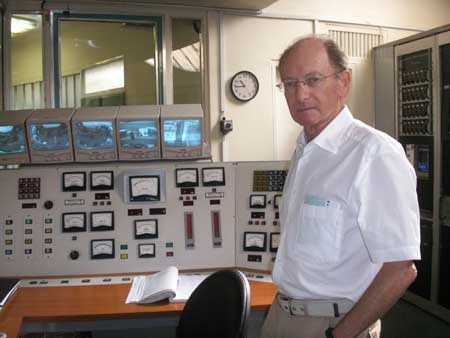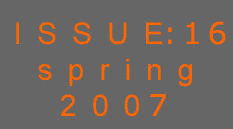
A Nuclear Reactor: a Dynamic System to Control
In April 2006, twenty years after the Chernobyl
accident, the public in general and the scientific community in
particular were strongly reminded about the dynamic character
of that type of nuclear reactors.
The neutron kinetics equations primarily determine
the transient behavior of nuclear reactors. These are an inherently
unstable set of equations. Their application will be presented
in a MATLAB code to explain the Chernobyl power surge.
However, commonly used nuclear reactors also
have stabilizing internal capabilities. These come from the nuclear
fuel and the moderator. They are called the fuel temperature coefficient
and the moderator temperature coefficient respectively. External
control is accomplished with control rods. Inserting or withdrawing
them will result in a power decrease or increase. This is illustrated
with MATLAB calculations and verification, with results from a
reactor in Ringhals.
At the beginning of the Swedish nuclear era
in the 1960s different type of reactors were studied. Extensive
simulations with an analogue computer were performed to study
the inherent safety character of the planned heavy water reactor.
There too the cooling medium’s coefficient plays a decisive
role. The chart illustrating the stable and unstable areas with
the variety of the fuel temperature coefficient and the cooling
medium’s reactivity coefficient will be discussed.
An analytical study with z-transform illustrating
the importance of choosing the right control systems completes
the seminar.

Nuclear Reactor Control
Frigyes Reisch
Automatic Control, Electrical Engineering,
KTH Royal Institute of Technology
Stockholm, Sweden
Seminar 2007 February 22
To encourage students to study the automatic
control of nuclear reactors, it is useful to let them make their
own computer codes instead of only using huge detailed programmes
with “invisible” contents. It also proves how straightforward
direct analyses without using sophisticated codes can give valuable
results.
Lately I was asked by the New Scientist
whether I was surprised that an accident with a Chernobyl type
of reactor could have happened. I answered that I was not surprised
at all. Now, twenty years later, it was easy to demonstrate it,
as it is shown in the 2006 summer addition of Nuclear News.
The simple equations were verified in that year’s autumn
edition.
However, the story started long ago, in the
mid 1960s.
As part of my Ph. D. work I analyzed the dynamic
behavior of a boiling heavy water reactor. As the parameters were
uncertain at the design stage I had to make parameter studies
and indeed, with certain parameters, a small perturbation could
cause an oscillatory increase of power or a straight forward avalanche
increase of the neutron flux.
The other part of my PhD work was to study a
suitable control system for a multi channel reactor. The obvious
method was to choose a sampled data control system. Here too,
the importance of selecting the correct control parameters to
avoid instability was soon apparent.
With such a background it was easy to imagine
in April 1986 what could have happened with a multi-channel boiling
water reactor with a positive void coefficient.
References
New Scientist, Careers Guide 2007 (pages 10 and 11)
www.exacteditions.com/exact/browse/324/337/1979/3/12
ENS News 2006 (autumn edition)
Reactor Kinetics Equations applied to the start-up phase of a
Ringhals PWR
www.euronuclear.org/e-news/e-news-14/pwr.htm
ENS News 2006 (summer edition)
Neutron Kinetics of the Chernobyl Accident
www.euronuclear.org/e-news/e-news-13/neutron-kinetics.htm
Nucl. Appl., 3: 590-8(Oct. 1967).
 ANALYTICAL STUDY OF THE DYNAMIC
BEHAVIOR OF THE SELF-CONTROLLED MARVIKEN BOILING HEAVY-WATER REACTOR
(1.8MB)
ANALYTICAL STUDY OF THE DYNAMIC
BEHAVIOR OF THE SELF-CONTROLLED MARVIKEN BOILING HEAVY-WATER REACTOR
(1.8MB)
Nucl. Sci. Eng., 26: 378-84(Nov. 1966).
 STABILITY ANALYSIS OF A SAMPLED-DATA
CONTROLLED NUCLEAR REACTOR SYSTEM. (2.6MB)
STABILITY ANALYSIS OF A SAMPLED-DATA
CONTROLLED NUCLEAR REACTOR SYSTEM. (2.6MB)
|




